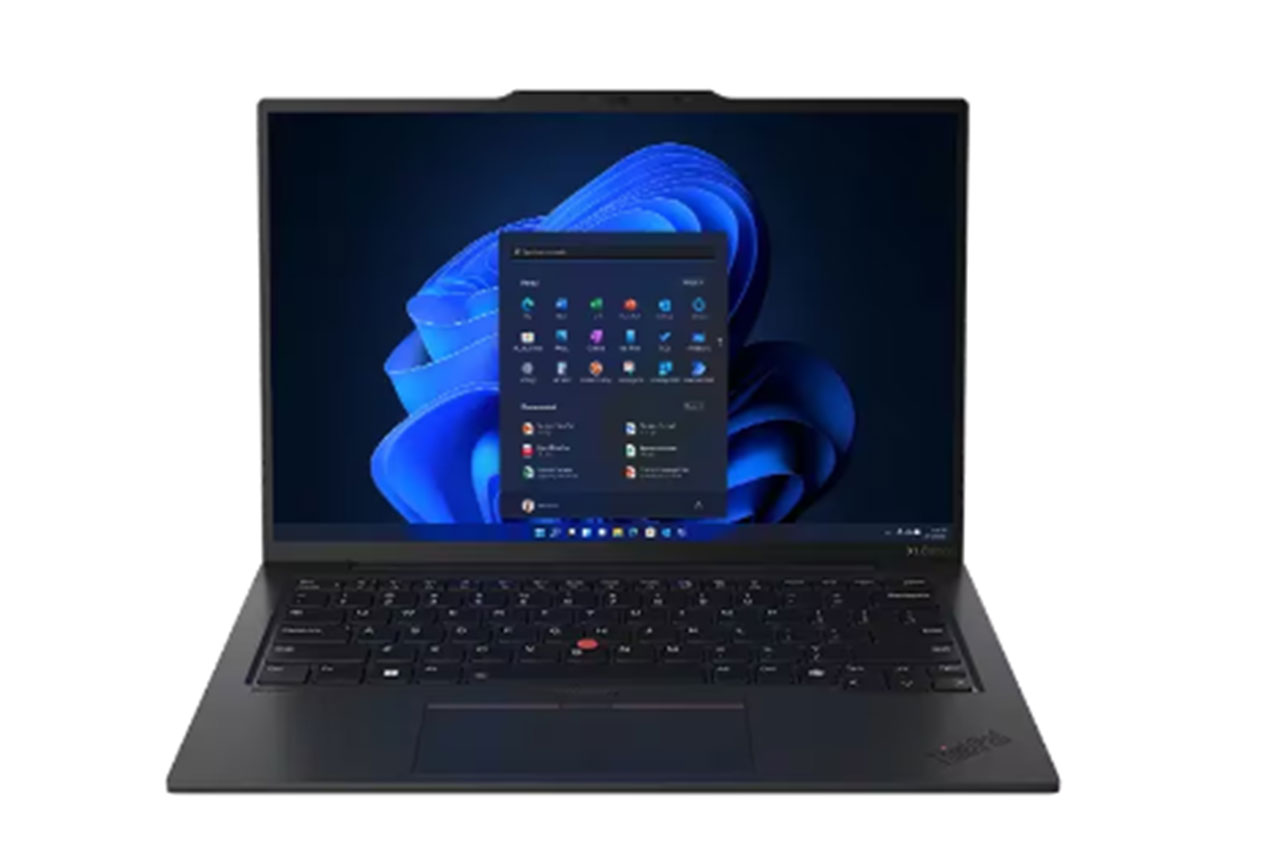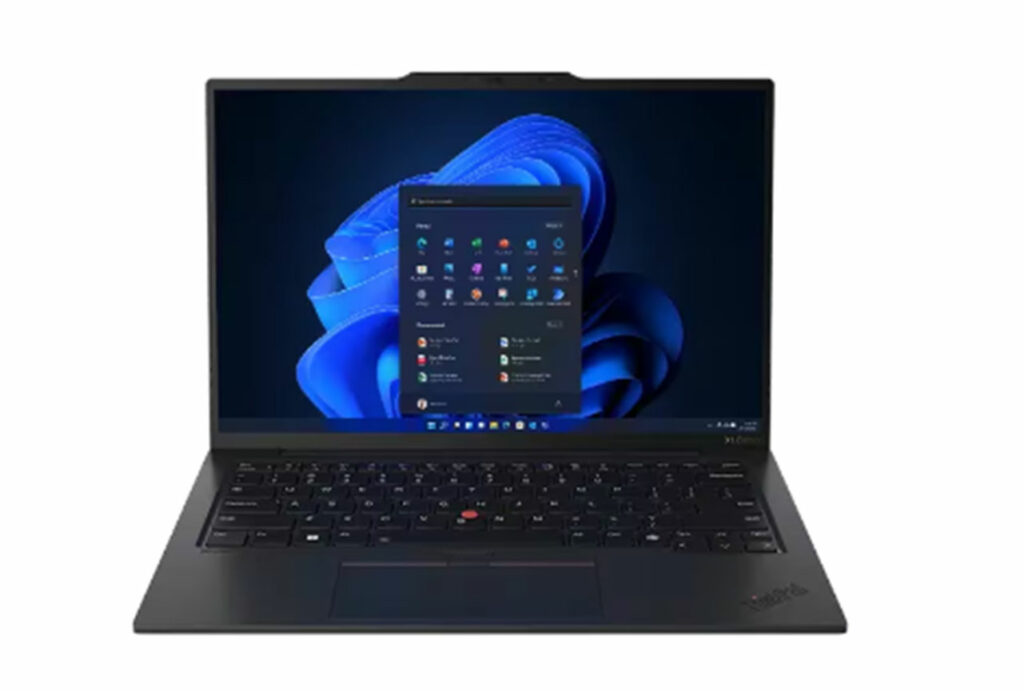We put the Lenovo ThinkPad X1 Carbon Gen 12 through our rigorous DXOMARK Laptop test suite to measure its performance in sound, camera and display. In this review, we will break down how it fared in a variety of tests and several common use cases.
Overview
Scoring
Use-case and feature subscores included in the calculations of the global score
 Lenovo ThinkPad X1 Carbon Gen 12
Lenovo ThinkPad X1 Carbon Gen 12

111
camera
68
Apple MacBook Pro 14" (M3 Pro, 2023)
Best: Apple MacBook Pro 14" (M3 Pro, 2023) (93)
45
Lenovo ThinkPad X9 Aura
Best: Lenovo ThinkPad X9 Aura (56)
64
Apple MacBook Pro 14" (M3 Pro, 2023)
Best: Apple MacBook Pro 14" (M3 Pro, 2023) (76)
83
Apple MacBook Pro 14" (M2 Pro, 2023)
Pros
- Very well-controlled noise in indoor conditions
- Generally accurate target exposure on faces
- Fairly accurate white balance in tested conditions
Cons
- Visible clipping on contrasted and backlit scenes
- Exposure overshoots and oscillations when conditions change
- Occasional unstable white balance transitions
Test summary
About DXOMARK Laptop tests: For scoring and analysis in our laptop reviews, DXOMARK engineers perform a variety of objective tests and undertake more than 20 hours of perceptual evaluations under controlled lab conditions and real-life scenarios. (For more details about the Laptop protocol, click here.)
The following section gathers key elements of our exhaustive tests and analyses performed in DXOMARK laboratories. Detailed performance evaluations in the form of reports are available upon request. Do not hesitate to contact us.
Camera
111
Lenovo ThinkPad X1 Carbon Gen 12
136
Apple MacBook Pro 14" (M4, 2024)
Apple MacBook Pro 14" (M4, 2024)
About DXOMARK Camera Laptop tests
DXOMARK evaluates the image quality of the built in camera during video calls, whether with a single person or with multiple people, in a variety of lighting conditions. Our camera evaluation particularly assesses the ability of the built-in camera to clearly render human faces during video calls. Other intrinsic camera quality aspects are also evaluated, like color reproduction, texture, and noise, as well as artifacts.
The Lenovo ThinkPad X1 Carbon Gen 12 is generally a good device for video conferencing, with its camera often providing accurate target exposure on faces. Video conferencing was generally handled well, even if the camera’s dynamic range could be limited in more challenging use cases.
White balance is quite neutral with fairly pleasant colors and skin tones. When light conditions change, however, the adaptation can be a bit rough with some exposure oscillations and unstable white balance transitions. The level of detail is quite high in most conditions and noise levels are low, especially in outdoor and indoor conditions.
The following chart presents the camera subscores for the video call use case:
Camera texture acutance on Deadleaves with illuminance levels
This graph shows the evolution of texture acutance with the level of lux measured on a Deadleaves chart.
The following graphs show the objective measurements performed in our camera labs:
Camera visual noise evolution with illuminance levels
This graph shows the evolution of spatial visual noise with the level of lux. Spatial visual noise is measured on the visual noise chart in the video noise setup. DXOMARK visual noise measurement is derived from ISO15739 standard.
Target exposure on face with illuminance levels
These measurements take place on a setup combining realistic mannequins and a backlit panel simulating high dynamic range conditions. This graph shows the evolution of lightness measured on the forehead of the realistic mannequin with the level of lux, for multiple lighting conditions. The lightness is measured in L*. Delta EV specifies the difference of luminance in stops between the face and the light panel simulating HDR conditions.
Target exposure on face with illuminance levels in HDR conditions
These measurements take place on a setup combining realistic mannequins and a backlit panel simulating high dynamic range conditions. This graph shows the evolution of lightness measured on the forehead of the realistic mannequin with the level of lux, for multiple lighting conditions. The lightness is measured in L*. Delta EV specifies the difference of luminance in stops between the face and the light panel simulating HDR conditions.
Target exposure on face with illuminance levels in HDR conditions
These measurements take place on a setup combining realistic mannequins and a backlit panel simulating high dynamic range conditions. This graph shows the evolution of lightness measured on the forehead of the realistic mannequin with the level of lux, for multiple lighting conditions. The lightness is measured in L*. Delta EV specifies the difference of luminance in stops between the face and the light panel simulating HDR conditions.





